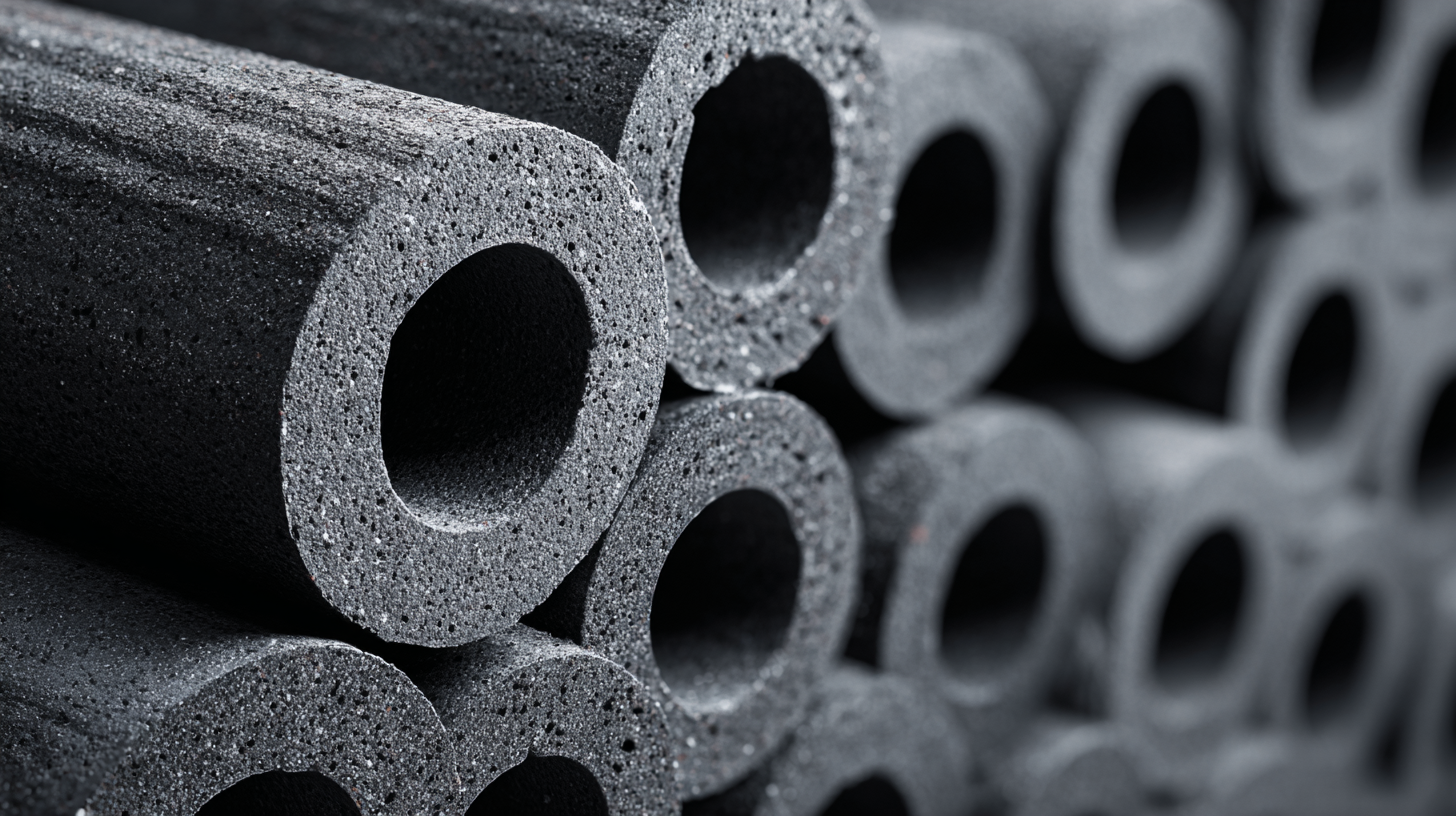In today's industrial landscape, the demand for reliable and high-performance materials has never been higher, particularly when it comes to heat management in various applications. Heat resistant gaskets play a crucial role in ensuring the integrity of seals and preventing leaks in environments subjected to extreme temperatures. According to a recent report by Markets and Markets, the global gasket market is projected to reach USD 6.69 billion by 2025, with heat resistant gaskets expected to see significant growth due to their essential applications in automotive, aerospace, and energy industries. As industries continue to innovate and seek efficiencies, understanding the top real-world applications of the best heat resistant gaskets becomes vital for engineers and manufacturers alike. This blog will explore five key areas where these gaskets excel, highlighting their importance and effectiveness in demanding conditions.

 Heat-resistant gaskets play a crucial role in various industries, ensuring reliability and safety in high-temperature environments. Key sectors benefiting from these gaskets include the automotive, aerospace, oil and gas, power generation, and chemical industries. Each of these fields demands robust materials capable of withstanding extreme conditions without compromising performance. In the automotive sector, for instance, heat-resistant gaskets are essential for engines and exhaust systems, where they help prevent leaks and maintain optimal functioning.
Heat-resistant gaskets play a crucial role in various industries, ensuring reliability and safety in high-temperature environments. Key sectors benefiting from these gaskets include the automotive, aerospace, oil and gas, power generation, and chemical industries. Each of these fields demands robust materials capable of withstanding extreme conditions without compromising performance. In the automotive sector, for instance, heat-resistant gaskets are essential for engines and exhaust systems, where they help prevent leaks and maintain optimal functioning.
The global gaskets and seals market reflects the increasing demand for specialized materials like heat-resistant gaskets, projected to grow significantly. According to market forecasts, the gaskets and seals market is expected to rise from USD 68.7 billion in 2022 to USD 95.1 billion by 2028, driven by technological advancements and the need for durable solutions in critical applications. This growth indicates a steady expansion in both industrial and commercial sectors, highlighting the importance of innovative materials that can withstand intense temperatures while ensuring safety and efficiency in operations.
Heat resistant gaskets are critical components in various industrial applications, ensuring reliable sealing under extreme temperature conditions. The key properties of these gaskets stem from the materials used in their construction. Common materials include silicone, PTFE (Polytetrafluoroethylene), and graphite, each renowned for their unique thermal stability. For instance, silicone gaskets can typically withstand temperatures ranging from -70°F to 450°F (-57°C to 232°C), while PTFE gaskets can perform effectively at even higher temperatures, around 500°F (260°C). Graphite gaskets, on the other hand, are capable of enduring extreme conditions, withstanding temperatures up to 900°F (482°C), making them suitable for demanding environments such as power generation and chemical processing.
Recent data from the Global Gasket Market Report indicates that the demand for high-performance heat resistant gaskets has surged, driven by industries such as automotive, aerospace, and oil and gas. The report highlights that the market for heat resistant gaskets is expected to grow at a CAGR of 5.2% from 2021 to 2026, reflecting the increasing need for durable sealing solutions. As industries continue to evolve, the role of heat resistant gaskets becomes increasingly vital, underscoring the importance of selecting the right material for optimal performance and lifespan in high-temperature applications.
In the automotive and aerospace sectors, heat-resistant gaskets are crucial components that ensure safety and efficiency. These industries rely on high-performance materials that can withstand extreme temperatures and pressures. According to a report by Grand View Research, the global automotive gasket market is expected to reach $6.6 billion by 2025, driven by the increasing demand for lightweight materials that enhance fuel efficiency and reduce emissions. Heat-resistant gaskets made from advanced composites are essential in this transition, as they prevent leaks of critical fluids and gases, thereby ensuring optimal engine performance.
Similarly, in the aerospace industry, the need for reliable sealing solutions is paramount due to the extreme thermal environments experienced during flight. A study published by MarketsandMarkets reveals that the aerospace gasket market is projected to grow to $1.1 billion by 2025, with heat-resistant materials playing a pivotal role in meeting the stringent safety standards required by this sector. These gaskets not only facilitate the proper functioning of engines and hydraulic systems but also contribute to the overall longevity and reliability of aerospace components. As both sectors continue to innovate, the demand for high-quality heat-resistant gaskets will undoubtedly remain significant.
Heat-resistant gaskets play a pivotal role in the oil and gas industry, where extreme temperatures and high pressures are commonplace. These gaskets ensure safety and maintain efficiency by providing reliable sealing solutions that prevent leaks and withstand harsh conditions. As the demand for energy solutions grows, the integration of advanced sealing technologies is becoming increasingly vital. This shift not only enhances performance but also contributes to the sustainability of critical infrastructure in the sector.
With the global oil and gas processing seals market on an upward trajectory, expected to reach $8.75 billion, innovation in gasket materials is crucial. Modern high-performance materials, designed to combat the unique challenges posed by oil and gas operations, are at the forefront of this industry expansion. Companies are investing in new materials and design techniques to address sealing issues that traditional products, such as expanded graphite, struggle to overcome in extreme environments. By prioritizing these advancements, the industry is poised to improve safety, operational efficiency, and environmental sustainability.

Emerging trends in heat resistant gasket technology highlight significant innovations that cater to the growing demands of various industries. One noteworthy development is the integration of advanced materials such as PTFE and silicone blends, which enhance durability and temperature tolerance. These modern gaskets not only resist extreme heat but also exhibit excellent chemical compatibility, making them ideal for applications in automotive, aerospace, and oil & gas sectors.
To ensure you select the best heat resistant gasket for your needs, consider these tips. First, evaluate the specific temperature and pressure conditions your application will face. This will help you determine the most suitable material and design. Second, keep an eye on the compatibility of the gasket material with the media it will frequently encounter, as this can significantly influence its longevity and performance. Lastly, be proactive in monitoring and scheduling regular maintenance checks; this can prevent costly system failures and enhance the overall efficiency of your equipment.
As technology continues to evolve, the future of heat resistant gaskets looks promising with innovations like smart gaskets that incorporate monitoring sensors. These advancements allow for real-time performance tracking, ensuring optimal operation and prolonging gasket life. Staying informed about these trends will empower you to make better choices and leverage the latest technologies in your applications.
